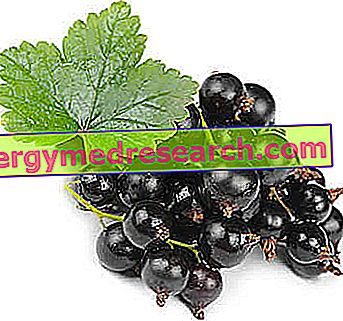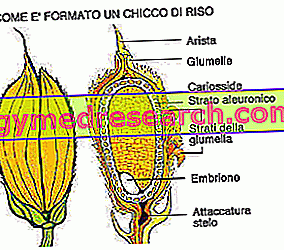Mentha piperita L.
Fam. Labiatae

Ing Peppermint
Sp. Minta pimentada
Ted. Pfefferminze
Dialectal names: Mentassu (Lig.), Mentasi (Piem.), Mint salvadega (Lomb.), Puniol (Ven.), Mintastar (Em.), White mint (Tosc.), Mentone (Marche), Menta pedacqua (Abr. .), Amenta (Camp.), Mint servaggia (Cal.), Mintastro (Sic.), Menta de riu (Sard.) .
Description
Mint is a herbaceous, perennial plant, 50-60 cm tall, provided with ramified fibrous rhizome, which forms numerous stolons; quadrangular stem, erect, branched, tinged with purple or green, opposite leaves, petiolate, lanceolate and toothed; rose-violet or white flowers, grouped in verticils forming short spikes (spicastri). The flowers have a gamosepal goblet, cylindrical, bell-shaped, composed of five teeth covered with hairs; the gamopetal corolla, longer than the calyx, has four similar lobes; they have 4 unequal stamens. Blooms in July
fruit: tetrachenium composed of four smooth cocci;
plant aroma: pungent
flavor: spicy combined with a sense of freshness
Areal
Peppermint is believed to be native to Europe. It lives from the maritime area to the mountain region, in damp places, along rivers and streams. Sometimes it is found as a wild species. The main cultivation areas are located in Hungary, Yugoslavia, Bulgaria, Romania, England, Morocco, Italy.
Culture
Mint shuns clay and cold soils, preferring those that are permeable, relatively light and fresh, rich in organic substance and sub-acids.
Although mint is a perennial plant, the crop almost always lasts one year since, from the second year onwards, the plants produce large quantities of stolons which depress the formation of epigeal biomass. Being a sterile hybrid, the mint propagates only via agamic using stolons taken from a one-year menteto; the length of the stolons should not be less than 15 cm; the layout of the plants is in rows spaced 40-50 cm, the optimal density fluctuates around 10-15 plants per square meter.
Mint is a demanding crop especially in nitrogen and potassium. It has been repeatedly noted that nitrogen increases the menthol and menton content in essence.
Adversity: the crop is subject to adversity by Funghi ( Puccinia menthae, Verticillum dahliae, V. albo-atrum, V. Nigrescens) which by acting on the conducting vessels often lead to desiccation of the entire plant Erysiphe cichoracearum and Ramularia menthicola attack the leaves, while Rizoctonia solani causes rot at the level of the root system. Insects: like moths, whose larvae live at the expense of the epigeal part of the plant, and some beetles and hemiptera. Weed plants: Artemisia verlotorum
Drug: the leaves and flowering tops, from which a mint essential oil is extracted that contains menthol, menton, mentofuran and a bit of sesquiterpenes.
Product collection and yields
Mint is usually harvested twice during the summer season, mowing ground plants, preferably in the early hours of the day.
The first mowing takes place in Italy in July in pre-flowering, the second at the end of the summer. A good mint crop can produce a biomass of 25-30 t / ha, whose dry yield is about 25%.
uses
In herbal medicine : mint has an antiseptic and refreshing action, it is also antispasmodic and is used for digestive teas, together with verbena and linden, and as a mild analgesic for stomach pains, in nervous excitement and in cases of insomnia.
In cosmetics: mint is used to flavor toothpastes and mouthwashes.
In dietetics: mint is used in the confectionery, food and liquor industry and to flavor pharmaceutical products.
Watch the video
X Watch the video on youtube



